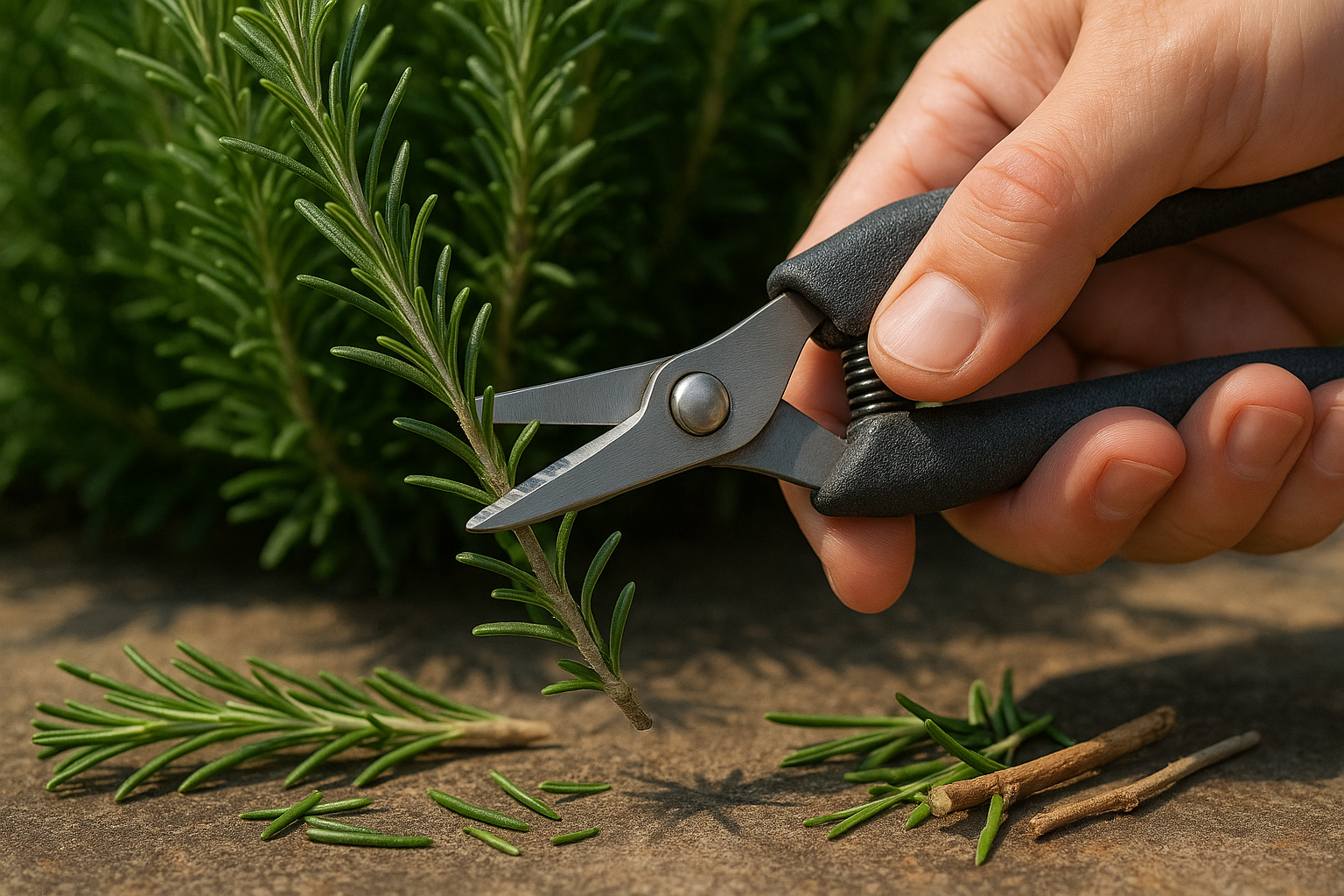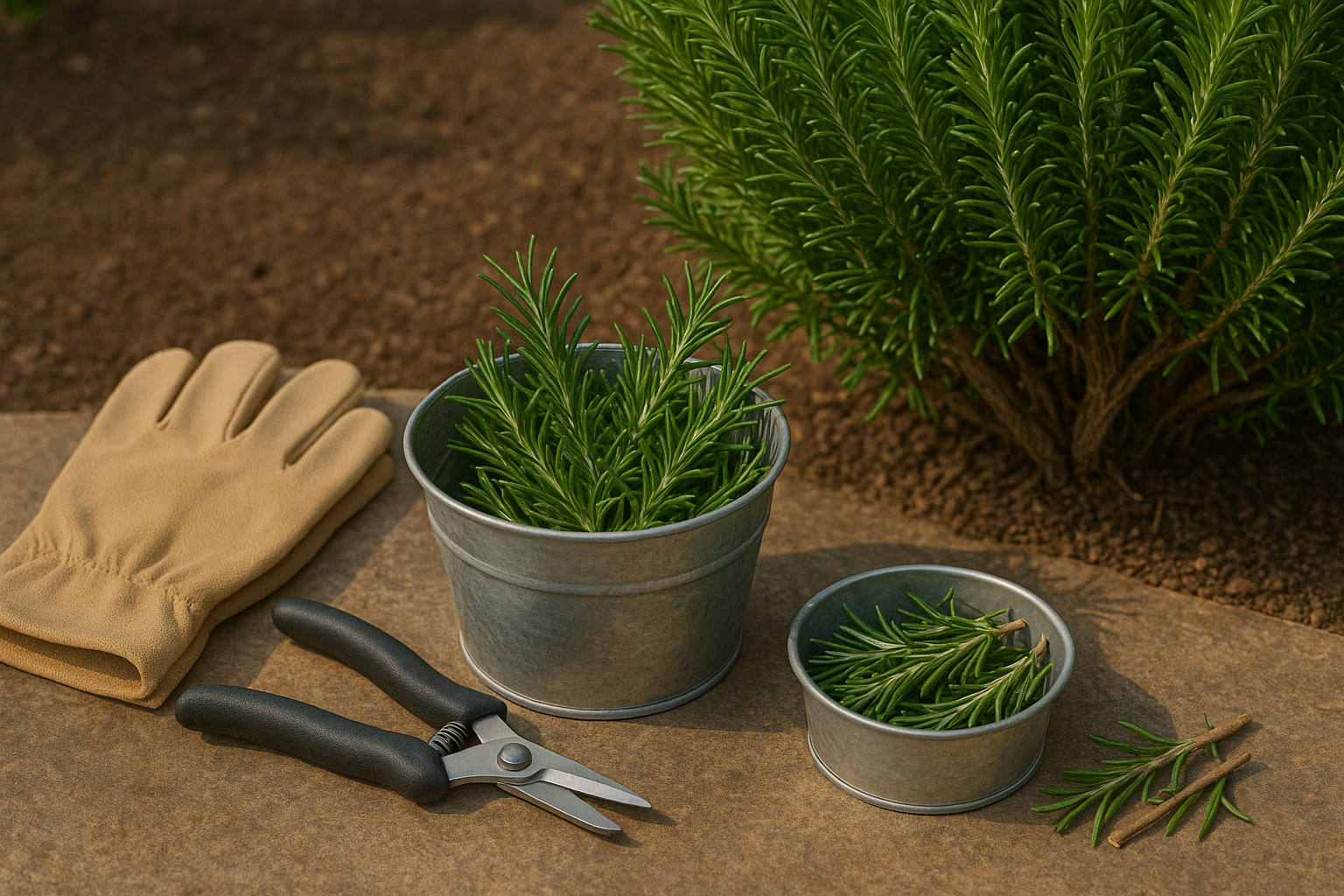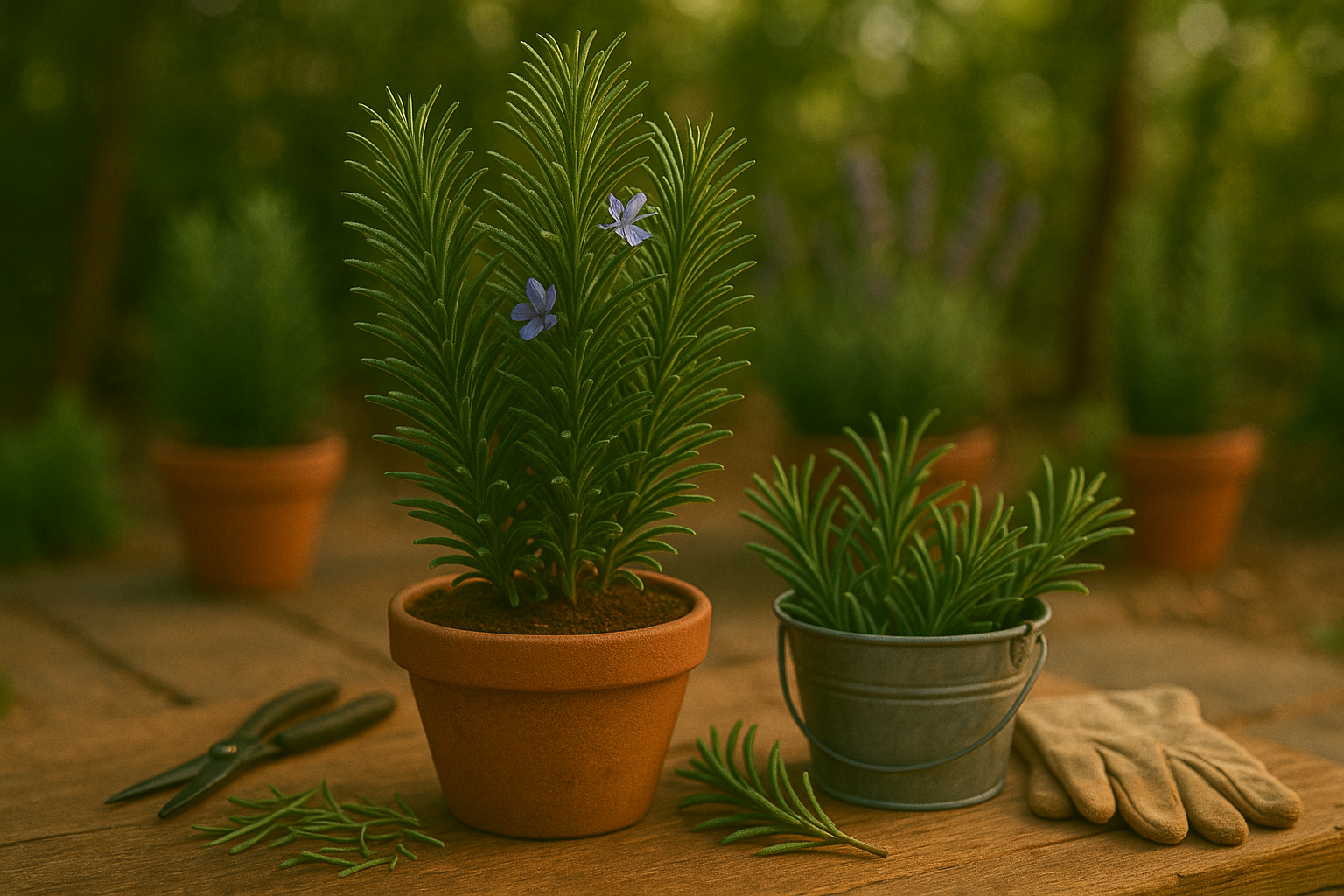Why Pruning Rosemary Matters

Pruning rosemary is essential if you want a plant that’s healthy, vibrant, and productive year after year. By regularly snipping back your rosemary, you encourage the shrub to produce new, lush growth instead of becoming tall, thin, and woody over time. This not only keeps the plant looking tidy and attractive but also ensures a steady supply of those fragrant leaves for your kitchen.
Pruning helps the plant focus its energy on growing fresh stems and leaves, resulting in a bushier, fuller shape. Another big benefit is that trimming away older, crowded branches boosts air circulation. This might sound minor, but it’s key for preventing fungal diseases and pest issues that can develop when air can’t move freely between stems.
On the flip side, if you skip pruning, rosemary quickly becomes overgrown with long, spindly branches that are woody and tough. This makes it less appealing for culinary use and reduces how many new shoots the plant will produce. Plus, dense, unpruned shrubs are more likely to develop disease and suffer from poor airflow, which can shorten their lifespan.
Routine pruning is simple: aim to trim back about a third of the plant in early spring or after flowering, cutting just above a leaf joint or outward-facing bud. This encourages branching and keeps the shrub strong for future seasons. Ultimately, regular pruning is a straightforward but powerful way to keep your rosemary thriving—productive, aromatic, and beautiful for years to come.
When Is the Best Time to Prune Rosemary?
The best time to prune rosemary is in late spring, just after the last threat of frost has passed. This timing encourages bushy, healthy growth while minimizing the risk of frost damage to delicate new shoots.
Throughout the summer, you can give your rosemary light trims to maintain its shape and harvest fresh sprigs for cooking, but avoid heavy pruning outside of the main growth period.
Regional climate plays an important role in pinpointing when to prune:
- If you live in a milder, frost-free area, you may be able to start a bit earlier and extend light trimming into early fall.
- In contrast, gardeners in regions with long, harsh winters should be particularly cautious, waiting until the soil and air have warmed consistently before making any cuts.
It’s crucial not to prune rosemary in late fall or winter; cutting back at this time can stimulate tender new growth that’s especially susceptible to cold snaps, increasing the risk of plant shock or dieback.
For optimal health and productivity, plan to prune rosemary at least once a year, with more frequent light trims as needed to keep the plant tidy and prevent it from becoming woody. Regular, mindful pruning helps maintain a compact shape, increases air circulation, and promotes lush, flavorful foliage.
If you’re new to rosemary, start with small snips and observe how your plant responds—over time, you’ll learn the ideal pruning routine for your specific climate and growing conditions. With these simple guidelines, you’ll enjoy a thriving rosemary bush that’s as beautiful as it is useful in the kitchen.
How to Prune Rosemary

Pruning rosemary is simple when you have the right tools and know-how. Start by gathering your essentials: clean, sharp garden shears (disinfected with rubbing alcohol to prevent disease), gloves to protect your hands from the aromatic oils, and a small bucket for clippings.
Before you begin, inspect your rosemary plant—look for healthy green stems and check for any dead or damaged growth.
For young plants—those less than a year old—focus on light trimming. Simply pinch or snip off the top two to three inches from each stem, which encourages bushier growth by prompting side shoots to develop. Be mindful not to cut too close to the woody base, as rosemary doesn’t regrow well from old, leafless wood.
For more mature, woody rosemary bushes, you can prune harder to rejuvenate the plant, but proceed with extra care: use sharp shears to remove no more than one-third of the plant’s total growth at any one time. Focus your cuts on green, leafy stems and avoid cutting deep into bare wood, since old growth almost never sprouts new shoots.
If you find brown, tangled stems, trim them back just a bit into the green area—never into the dry, leafless parts.
As a tip, pruning after the last frost in spring or after flowering gives the plant time to heal and thrive during the growing season. Remember that periodic light pruning throughout the summer can keep rosemary neatly shaped, but it’s best to avoid aggressive trims as the growing season winds down.
Over-pruning or cutting into old wood risks stunting or even killing your rosemary, so stick to a gentle touch and let the plant’s natural response guide you. In the kitchen, you can make use of clipped stems for cooking, so nothing goes to waste.
With these steps, you’ll have a lush, productive rosemary plant that adds beauty (and flavor) to your home all year long.
Common Pruning Mistakes to Avoid
One of the most common pruning mistakes with rosemary is over-pruning, which can leave your plant looking sparse and struggling to regrow. It’s tempting to cut back a lot at once, especially if you want to shape the bush or harvest a large amount of herbs. However, taking more than one-third of the plant at a time can shock the rosemary and slow its recovery.
Another frequent error is cutting into old, woody stems. Unlike many herbs, rosemary is slow to regenerate from old wood, and those older branches often won’t sprout new growth. Always focus on trimming the softer, green stems instead.
If you notice signs of stress such as yellowing needles, drooping stems, or sections not producing new leaves, your rosemary may be reacting to excessive or improper cuts. To help your plant recover:
- Hold off on further pruning
- Ensure it receives adequate sunlight, water, and well-drained soil
- Avoid fertilizing immediately after heavy pruning, as this can stress the root system further
Instead, be patient—rosemary grows slowly but can regain its strength with proper care. In the future, prune lightly and regularly, focusing on young shoots, and always use clean, sharp shears to minimize damage. This gentle approach keeps your rosemary bush healthy, lush, and productive year-round.
Encouraging Bushier Growth After Pruning
Boosting bushier growth in your rosemary after pruning is all about encouraging the plant’s natural tendency to branch out. Start by snipping just above a leaf node or set of leaves rather than at random points—this signals the plant to send out new shoots from that area, resulting in a fuller, more compact shape.
Try pinching the tips of the stems between your thumb and forefinger instead of just using shears; this gives you more control and usually stimulates even more branching. If you see upright, vertical shoots racing ahead, remove or trim them back to promote side shoots, which help create that lush, bushy look.
After pruning, give your rosemary some TLC:
- Water it consistently but allow the soil to dry out between waterings so roots don’t rot.
- Feed lightly with a balanced organic fertilizer to fuel robust regrowth, but avoid overfeeding, as too much fertilizer can result in leggy, weak stems.
- Make sure your plant gets plenty of sunlight—at least six hours a day is ideal—since rosemary thrives in bright conditions.
- Position pots or plant beds so air can circulate around the foliage, reducing the risk of fungal problems as fresh leaves emerge.
Companion planting is another smart strategy; tuck rosemary alongside plants like sage, thyme, or beans. These plants not only share similar care requirements but also help repel pests and attract beneficial insects, giving your rosemary an even better chance to flourish.
Caring for Pruned Rosemary
After you’ve pruned your rosemary, gentle aftercare is key to helping it recover and thrive. Start by giving your plant a light drink of water—just enough to moisten the soil without making it soggy. Rosemary doesn’t like overly wet roots, so avoid saturating the area.
Hold off on fertilizing for the first two to four weeks post-pruning, as fresh cuts can make the plant vulnerable, and too many nutrients too soon might stress it further. Instead, focus on observing your plant: keep an eye out for signs of stress such as yellowing leaves, drooping stems, or slowed growth.
Only when you see healthy new growth emerging should you resume feeding. Use a balanced, slow-release fertilizer or a blend designed for herbs, making sure it contains key nutrients like nitrogen for leaf growth, phosphorus for root strength, and potassium for overall health.
Don’t forget to check the plant regularly for pests such as aphids or spider mites, which may target stressed bushes. If you spot any, gently rinse the leaves with water or treat them with a mild, organic insecticidal soap.
Also, watch for fungal issues in humid conditions; good airflow and keeping the area around your rosemary tidy can help prevent disease. Regular monitoring and a bit of patience will help your rosemary bounce back stronger and more productive than ever. This careful attention not only supports regrowth but also keeps your plant healthy for future harvests.
Troubleshooting
If your rosemary bush has become woody or overgrown, don’t panic—reviving it is often possible with some patience and know-how. Start by gradually pruning away the oldest, thickest branches, but avoid cutting into the bare, woody stems since rosemary doesn’t readily sprout new growth from old wood.
Instead, each time you prune, focus on the green, leafy tips, taking off no more than a third of the plant at once. Spread this process over several months and multiple growing seasons if needed, allowing time for fresh shoots to emerge between trims. Water the rosemary deeply only when the soil is dry and give it plenty of sunlight.
Sometimes, neglected rosemary can make a surprisingly vigorous comeback, especially if it was in a sunny spot and hasn’t been left woody for too many years. However, if you notice that most of the plant is bare wood with few green sections, or if regular pruning doesn’t produce much new growth, it may have passed the point of recovery.
In these cases, it’s often best to take healthy cuttings from the greener sections and root them in water or moist soil to grow a fresh new plant. Sometimes, starting over lets you enjoy a bushier, more productive rosemary for years to come, making the most of your gardening space and effort.
